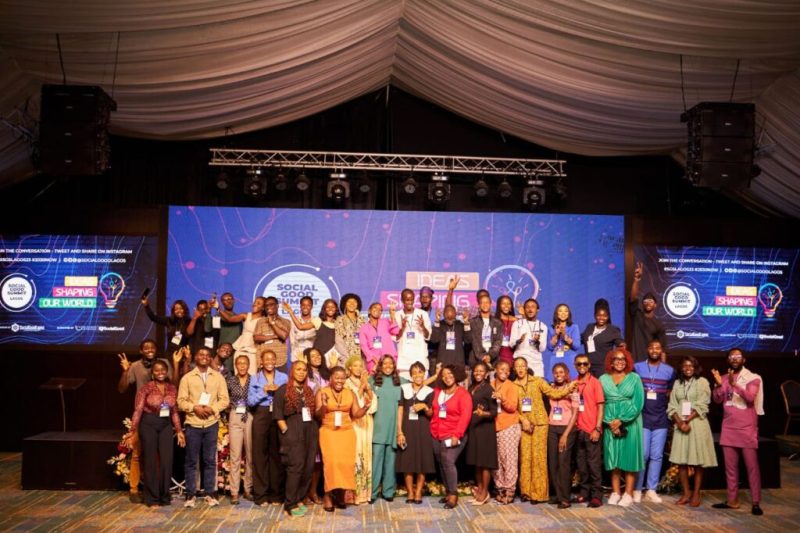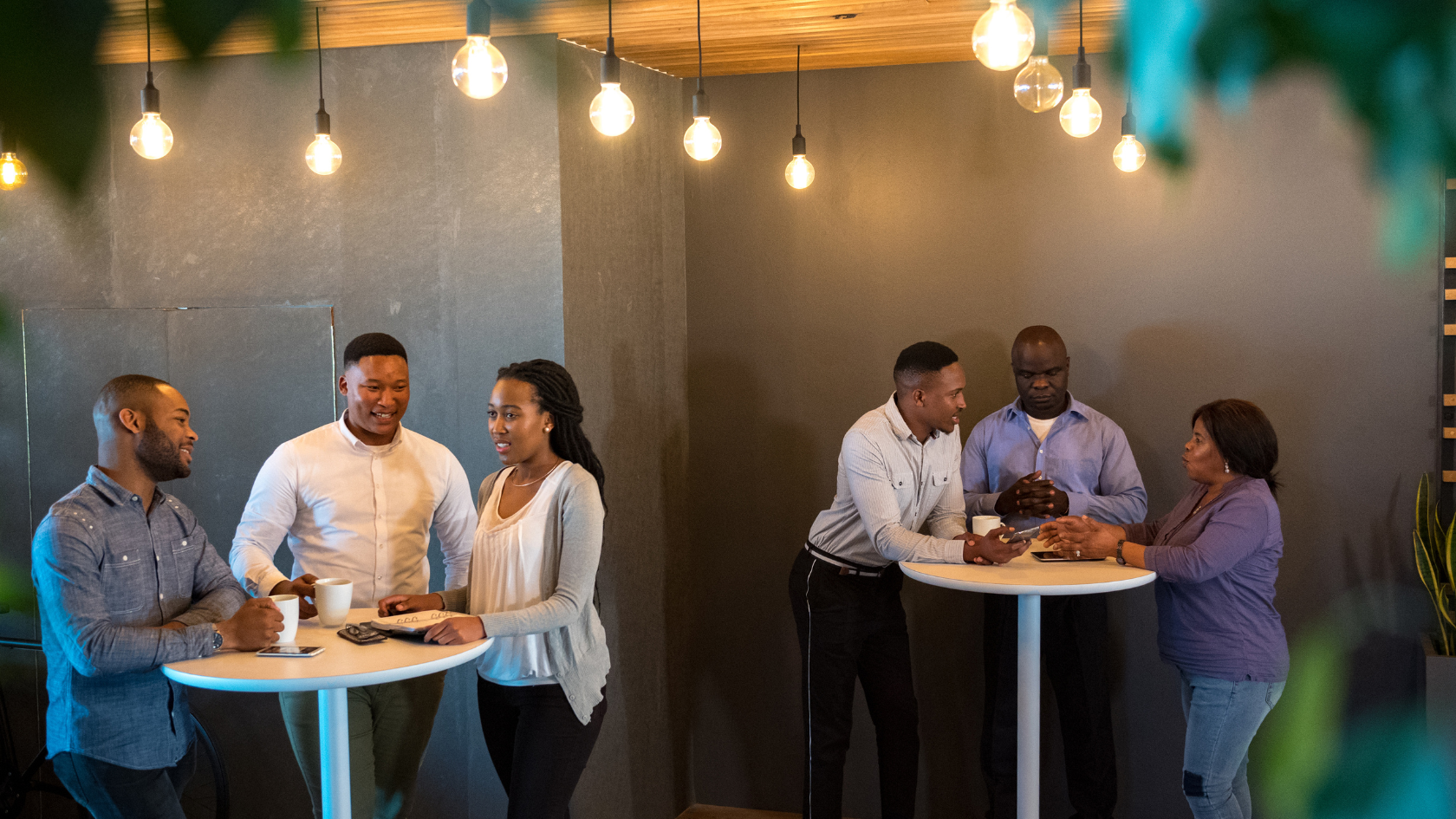On September 16, 2023, SocialGood Lagos, one of the local hubs of the United Nations Foundation plus Social Good program, held it’s 2023 edition of the SocialGood Summit Lagos. The theme of this year’s edition was Ideas Shaping the World. In line with this theme, SocialGood Summit Lagos 2023 focused on how we can leverage technology, new media and more young people participation to accomplish the 17 Sustainable Development Goals (SDGs). With the 2030 deadline underway, the SocialGood Lagos team curated sessions and speakers to hone in on the theme. The speakers shared incredible ideas on how to go beyond awareness to actions that drive the achievement of these goals. From a keynote by Mr. Niyi Yusuf, to interactive plenary sessions on the topics: Moving from Ideas to Change and More Young People, More SDGs Action. We also had innovative speeches from the likes of Chioma Ukpabi and Fabia Ogunmekan. Lessons from Behind the Mic at SocialGood Summit Lagos 2023 I had the privilege of anchoring the summit as the official emcee, and the experience was one for the books. From guiding the conversations and engaging the stakeholders at the summit to keeping the excitement amidst a rainy day. Beyond creating an amazing experience for the attendees, I also penned down some wisdom from the speakers. In this post, I’ll be sharing 5 of those lessons. This is to help anyone interested in contributing to Nigeria’s efforts towards the achievement of the 17 SDGs before 2030. 1. You Have a Role to Play. Usually when we think about national development, everyone’s expectation is that it is the government’s sole responsibility to change the standard of living in the country. However, that isn’t entirely true. Granted, the government has a role it must play. However, you and I must also make our inputs if Nigeria is to cover enough miles in the accomplishment of the SDGs before the 2030 deadline. 2. Educate Yourself. Did you know that the 17 SDGs are further broken down into 169 targets? Did you know that Nigeria is only in time to accomplish only one out of these 169 targets: registration at birth? That is both shocking and sad. But it also buttresses the fact that each of us needs to join this movement. How can you contribute? Start by educating yourself on the 169 targets of the sustainable development goals. This will help you to discover the area(s) you would like to contribute with your skills and experiences. Educate yourself also on the best approaches for participating in this very important and challenging work. If you’re new to this terrain, and are looking to join a team that’s already working in this regard, Social Good Lagos is currently open to volunteers. Consider joining the team to learn more about the role you can play, and begin taking action. 3. Find Partners. It goes without saying that this work is not a one-man business. Hands must be locked if we’re going to make significant strides before 2030. In fact, the 17th SDG is Partnership for the Goals. Go figure. SocialGood Lagos is keen on partnerships too. So it wasn’t surprising that one of the panel discussions covered partnerships. If you’ve already got your foot in the game, and are looking to find the right partners, the panelists advise that you need to first define your goals. What are you trying to accomplish? What are the challenges you would likely encounter? Who would make an ideal partner? Who has the skills, resources or will to solve the same problems you are working on? Which organisation can you collaborate with? I particularly loved what Sheila Ojei said about partnerships: it doesn’t always have to be money. For instance, instead of asking an organisation to provide monetary sponsorship for your project(s), consider partnering with an organisation that already has what you would spend the money on. 4. Social Entrepreneurship is a Thing. Usually, when we think of the 17 SDGs, opening an NGO that creates awareness or provides education in an area comes to many people’s minds. But can there be for-profit organisations whose business is creating solutions to one or more of the problems identified in the #Agenda2030? The answer is yes. Muazu Africa by Tolulope Makinwa and ECO by Samuel Owolafe-Austin are good examples. Can your startup/business manufacture a health product that can directly contribute to the eradication of some of the diseases covered in the SDGs? Then make it available at a subsidized rate? #somethingtothinkabout 5. Philanthropy is a Vital Vehicle. Fabia Ogunmekan’s speech was one for the money. Let me reiterate it this way: imagine you and 9 of your friends come together and decide to contribute N50,000 monthly to be donated to a cause working towards any of the goals/targets? That’s N6,000,000 per annum. Or you could decide to purchase a key medical instrument for a local hospital to provide better diagnosis and/or care to patients. The list goes on. It doesn’t have to be N50,000, but I’m sure you get the gist. So, if you already have too much going on that directly working on any of the goals/targets isn’t feasible for you, send your money to go where you can’t. Every kobo helps. Those were my top lessons from this year’s SocialGood Summit Lagos. In general, the event was a productive one. And I had a blast creating a wonderful experience for everyone (including the virtual attendees) as the event host. How are you contributing to the SDGs? Which of these lessons resonates with you? Want to experience the SGS Lagos 2023 yourself? Here’s a replay of the livestream. Are you looking to elevate your next event and leave a lasting impression on your audience? Let me bring a high dose of energy and professionalism to your event. Whether it’s a conference or an AGM, contact me today, and let’s discuss how I can add a touch of excellence to your event.
How Breakout Rooms Make In-Person Events Better (and Way More Fun)
This is a complete guide to using breakout rooms at in-person events. So if you want to create more engaging, meaningful, and interactive experiences for attendees, you’ll love the practical insights and strategies in this post. Let’s dive right in. How Breakout Rooms Make In-Person Events Better (and Way More Fun) If you’ve ever been to a big in-person event, you know how it feels to sit in a huge room filled with people. You’re one of many, listening to a speaker, maybe taking some notes, but let’s face it—unless you’re really tuned in, it’s easy to zone out a bit. Now, compare that to sitting in a cozy circle with a handful of people, having an actual conversation, sharing ideas, and maybe even laughing together. That’s the power of breakout rooms. They take the big, sometimes impersonal event experience and turn it into something meaningful, interactive, and, honestly, a lot more fun. As a professional emcee and learning and development facilitator, I get to see firsthand how valuable these breakout sessions are, both for attendees and for the event as a whole. Recently, I ran a poll on LinkedIn, asking people what their favorite way to engage at events was. The majority picked breakout rooms, hands down, over other options like live Q&As, polls, or social media shoutouts. So, what makes these little sessions such a hit? Let me take you through it. Why Breakout Rooms Matter: It’s All About Connection Imagine this: you’re at a conference about digital marketing. There’s a speaker up front talking about the latest trends in social media algorithms. It’s fascinating, but as soon as the session ends, you’re left with this itch to discuss what you just heard. Now, let’s say the organizers have set up breakout rooms. One of them is on “Personalizing Marketing for Different Generations.” You join, and suddenly you’re in a group with 10 other people who are all facing the same challenges, brainstorming solutions in real-time, and exchanging tips. Now you’re getting specific, actionable insights—and making connections that last way beyond the conference. This is why breakout rooms work. They turn passive listeners into active participants, giving everyone a chance to really engage and dive into topics that matter to them. In smaller groups, people feel comfortable speaking up, asking questions, and sharing ideas that might have stayed hidden in a big crowd. The Key to Great Breakout Rooms: Make It Personal The beauty of breakout rooms is that they’re personal, but creating that vibe takes a little planning. Let me share a story with you from an event I attended. It was a tech conference, and the organizers had set up themed breakout rooms like “Future of AI in Healthcare” and “Cybersecurity Trends.” I joined the AI session, where the moderator kicked things off with an icebreaker: “What’s the one thing in healthcare you’d love to see AI solve?” Suddenly, people were opening up. Someone talked about using AI to streamline medical records, another shared a story about a family member who benefited from telemedicine. Before we knew it, everyone was sharing personal insights, and it felt like we were genuinely collaborating. Because the group was small, each person’s perspective added real value to the conversation, and I walked away with ideas and connections that I wouldn’t have found in a large session. Setting Up Breakout Rooms That Really Work If you’re organizing an event and want to include breakout rooms, a few little touches can make all the difference. Here’s what I’ve seen work best—both as an emcee guiding the experience and a learning professional designing impactful sessions. 1. Keep Groups Small and Friendly The magic number seems to be around 8-15 people. Smaller groups feel like conversations rather than presentations. People feel more comfortable, and no one has to fight for a chance to speak. If you have a large event, you can rotate groups or even set up different sessions to give everyone a chance to join the discussion they care about. 2. Create Themes People Care About Choosing the right topics is half the battle. Think about what the attendees would love to dig deeper into. Let’s say you’re organizing a career development workshop. Your breakout rooms could focus on themes like “Mastering Remote Work,” “Building a Personal Brand,” or “Leading with Empathy.” These are topics people want to discuss and learn about from each other. 3. Get a Good Moderator A skilled moderator can steer the conversation and make sure everyone feels heard. At a learning breakout session I once moderated, I kept the discussion dynamic and inclusive with prompts like, “John, what are your thoughts?” or “Has anyone tried a different approach?” This kind of gentle guidance encourages participation and keeps things moving. 4. Use Interactive Elements to Keep It Fun If you’ve been in breakout rooms that fell flat, you know how awkward it can be. To avoid this, make things interactive. I was in one room where we did a lightning poll on potential industry trends, then split into pairs to discuss our thoughts. This quick change in pace helped us get to know each other better and opened up the conversation for different viewpoints. Additional Tips to Make Breakout Rooms Effective and Memorable 5. Tech Setup Tips for In-Person Breakout Rooms Even in in-person events, a little tech support can go a long way. For larger breakout rooms, consider having small mics available or a mini sound system so people can hear each other comfortably. If your breakout is hybrid, set up a screen or tablet so virtual attendees can join, and designate a virtual moderator to help keep them engaged. This way, tech works to support—not detract from—the flow. 6. Icebreakers and Engagement Techniques Start with a creative icebreaker to get everyone comfortable. For example, in a marketing session, you could ask attendees to share a memorable ad they recently saw or to introduce themselves with their “personal tagline.” In my experience, these prompts quickly loosen


